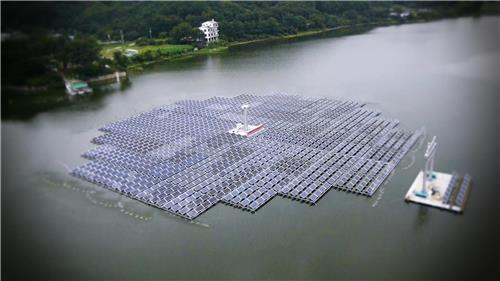Renewables and natural gas will account for a significantly larger part of the national energy mix over the next 12 years, as the government aims to facilitate the development of as much as 30 GW of solar capacity, according to a recent draft of the country’s eighth basic plan for electricity supply and demand.
By the end of 2016, South Korea’s total installed PV capacity stood at roughly 5 GW, said the International Renewable Energy Agency (IRENA).
“Korea will produce more power from renewable energy sources and natural gas, while gradually reducing its reliance on coal and nuclear power,” the Ministry of Trade, Industry and Energy (MOTIE) said in an online statement.
Under the proposed plan, the nation will generate 20% of its electricity from renewables by 2030, with natural gas likely to account for 18.8% of total generation. Coal-fired plants will generate 36.1% of South Korea’s electricity within the next 12 years, while nuclear facilities will produce 23.9%.
Renewables will account for 33.7% of the country’s total installed energy capacity by the end of this period, from just 9.7% in 2017. Nuclear and coal-fired generating capacity will fall from about 50.9% of the current energy mix, to roughly a third of the national total by 2030, the MOTIE said.
The authorities expect the country’s total liquefied natural gas capacity to rise from 37.4 GW to 47.5 GW over this period. Total installed coal-fired generating capacity, meanwhile, will edge up slightly from 36.8 GW to 39.9 GW.
However, the nation’s total installed nuclear capacity will fall from 22.5 GW to 20.4 GW by 2030, as the authorities take 11 aging plants offline. The country now operates 24 nuclear reactors, which generate about one-third of its electricity.
The MOTIE estimates that peak electricity demand will reach 100.5 GW by 2030, roughly 11% below the 113.2 GW forecast in its seventh energy plan.
It aims to further reduce peak demand by 14.2 GW, mainly by focusing on renewables and energy efficiency, and has set a target electricity reserve margin of 22% for 2030, with that excess capacity expected to bring the country’s total installed energy capacity to 122.6 GW over the next 12 years.
The new energy plan will be presented to the public next week and will likely be confirmed following a review by the country’s electricity policy commission.
This content is protected by copyright and may not be reused. If you want to cooperate with us and would like to reuse some of our content, please contact: editors@pv-magazine.com.



3 comments
By submitting this form you agree to pv magazine using your data for the purposes of publishing your comment.
Your personal data will only be disclosed or otherwise transmitted to third parties for the purposes of spam filtering or if this is necessary for technical maintenance of the website. Any other transfer to third parties will not take place unless this is justified on the basis of applicable data protection regulations or if pv magazine is legally obliged to do so.
You may revoke this consent at any time with effect for the future, in which case your personal data will be deleted immediately. Otherwise, your data will be deleted if pv magazine has processed your request or the purpose of data storage is fulfilled.
Further information on data privacy can be found in our Data Protection Policy.